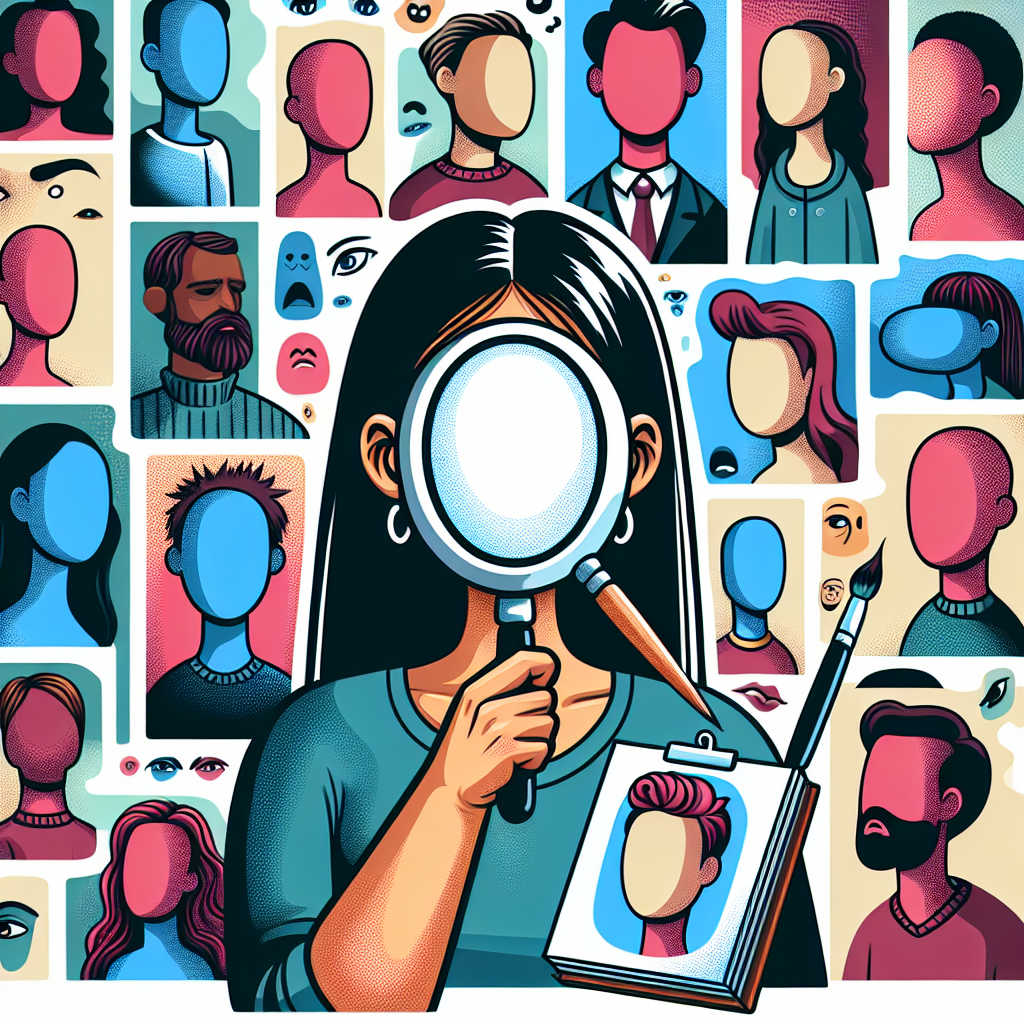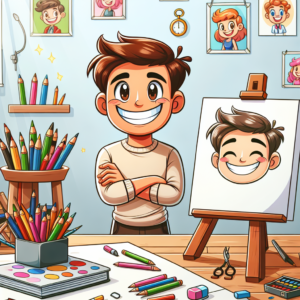Have you ever come across a faceless cartoon portrait and wondered what lies beneath the whimsical characters’ blank expressions? These enigmatic images have been popping up all over social media and art galleries, leaving viewers intrigued and mystified. Let’s delve into the world of faceless cartoon portraits and unravel the hidden meaning behind these captivating creations.
The Rise of Faceless Cartoon Portraits
Faceless cartoon portraits have gained popularity in recent years, captivating audiences with their unique and mysterious aesthetic. Artists around the world have embraced this trend, using faceless characters to convey a wide range of emotions and messages. What started as a niche art style has now become a mainstream phenomenon, with everyone from professional artists to hobbyists trying their hand at creating these intriguing portraits.
The Power of Anonymity
One of the key elements that make faceless cartoon portraits so compelling is the power of anonymity. By removing facial features, artists create characters that are both relatable and universal. Viewers can project their own emotions and experiences onto these blank faces, forming a personal connection with the artwork. This anonymity allows for a deeper exploration of themes such as identity, emotion, and human experience.
The Symbolism of Facelessness
The lack of facial features in cartoon portraits can symbolize a variety of themes and ideas. In some cases, faceless characters represent a loss of identity or individuality, highlighting the universal struggle to define oneself in a world that often imposes labels and expectations. Other times, facelessness can evoke a sense of mystery and intrigue, inviting viewers to question the true nature of the characters they see.
Expressing Emotion Through Body Language
While faceless cartoon portraits may lack traditional facial expressions, artists have found creative ways to convey emotion through body language and composition. From subtle gestures to bold poses, these characters speak volumes without uttering a single word. By focusing on posture, movement, and gesture, artists bring their characters to life and evoke a wide range of emotions in the viewer.
The Impact of Color and Style
Color and style play a crucial role in shaping the mood and tone of faceless cartoon portraits. Bright, bold colors can convey a sense of energy and vitality, while muted tones evoke a more introspective and somber mood. Artists often use a combination of colors and textures to create depth and dimension in their artwork, drawing the viewer’s eye and creating a visually stimulating experience.
Interpreting Faceless Cartoon Portraits
Interpreting faceless cartoon portraits is a highly subjective process, as each viewer brings their own unique perspective and experiences to the artwork. Some may see themes of isolation and loneliness, while others may interpret the characters as symbols of resilience and strength. The beauty of faceless cartoon portraits lies in their ability to spark conversation and provoke thought, inviting viewers to explore the deeper meaning behind the images.
FAQ
What is the significance of faceless cartoon portraits?
Faceless cartoon portraits symbolize themes of anonymity, identity, and emotion. By removing facial features, artists create characters that are open to interpretation, allowing viewers to project their own experiences and emotions onto the artwork.
How do artists convey emotion in faceless cartoon portraits?
Artists use body language, posture, and composition to convey emotion in faceless cartoon portraits. From subtle gestures to bold poses, these characters communicate a wide range of emotions without the need for traditional facial expressions.
What role does color and style play in faceless cartoon portraits?
Color and style play a crucial role in shaping the mood and tone of faceless cartoon portraits. Bright, bold colors can convey energy and vitality, while muted tones evoke a more introspective mood. Artists use a combination of colors and textures to create depth and dimension in their artwork.







+ There are no comments
Add yours